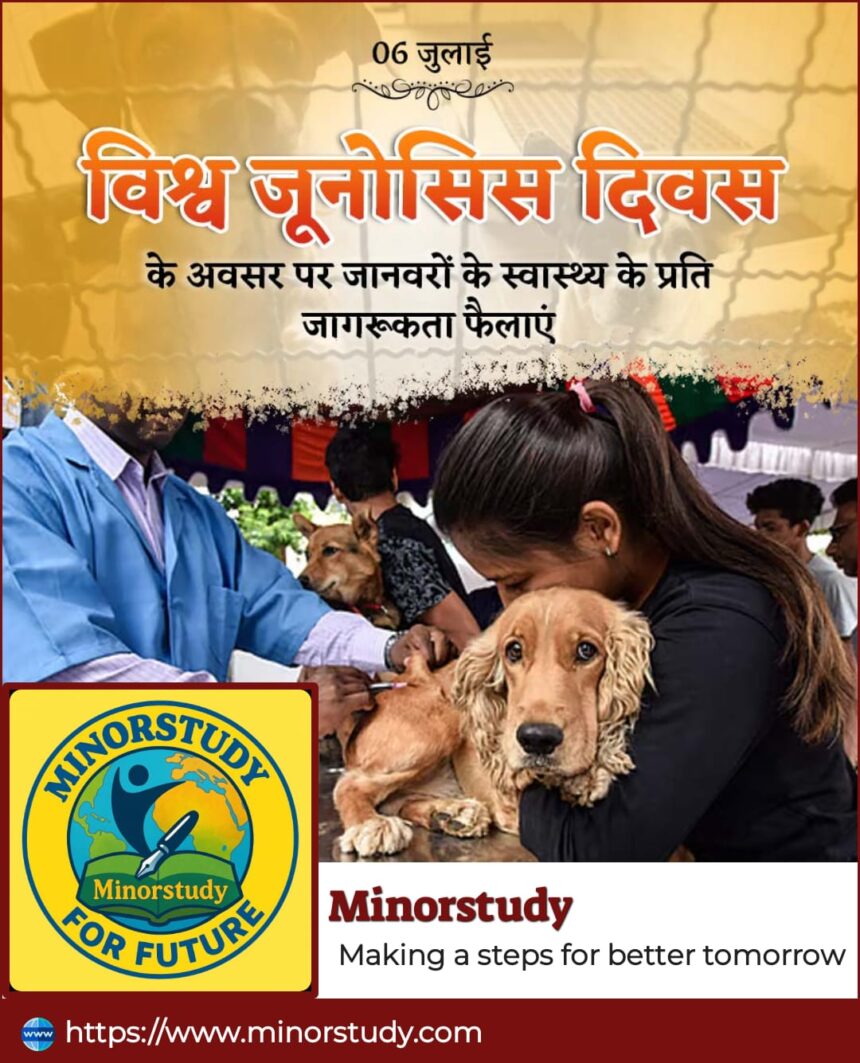🦠 9 Eye-Opening Facts About World Zoonosis Day That Could Save Lives
🌍 Introduction: A Day That Warns and Informs Humanity
World Zoonosis Day: In a world increasingly connected by trade, travel, and technology, one silent threat often overlooked continues to challenge global health — zoonotic diseases. From COVID-19 and Ebola to bird flu and rabies, these infections that jump from animals to humans can spark devastating pandemics.
- 🌍 Introduction: A Day That Warns and Informs Humanity
- 📖 History of World Zoonosis Day
- 📜 Timeline of Key Zoonosis Events
- 🧠 9 Eye-Opening Facts About Zoonosis and the Day
- 1. 60% of Infectious Diseases in Humans Are Zoonotic
- 2. Zoonotic Diseases Are Rising Due to Human Behavior
- 3. World Zoonosis Day Is More Relevant Than Ever
- 4. One Health Concept Is Central to Zoonosis Control
- 5. Rabies Still Kills 59,000 People Annually
- 6. Most Zoonoses Are Preventable
- 7. Pets Can Transmit Zoonotic Diseases Too
- 8. India Faces High Zoonotic Risks
- 9. Education Is the Best Vaccine
- 🙋♀️ Frequently Asked Questions (FAQs)
- ❓ What is World Zoonosis Day?
- ❓ Why is it important?
- ❓ What can individuals do to prevent zoonosis?
- ❓ What’s the connection with COVID-19?
- 🎯 Observance: How to Mark World Zoonosis Day
- 🧪 For Students and Schools
- 🐕 For Animal Lovers and Pet Owners
- 🧑⚕️ For Healthcare Workers and NGOs
- 📢 For Social Media Users
- 💌 Wishing Messages for World Zoonosis Day
- 💡 Important Points to Remember
- 🧭 Importance in Life and Society
- 🔚 Conclusion: A Wake-Up Call We Cannot Ignore
World Zoonosis Day, observed on July 6 every year, is a powerful reminder of this ever-present danger and the importance of prevention, awareness, and responsible coexistence with animals. This article dives deep into its history, facts, FAQs, timeline, significance, observance tips, heartfelt wishes, and its immense importance in society and everyday life.
📖 History of World Zoonosis Day
World Zoonosis Day commemorates the discovery of the first successful rabies vaccine by Louis Pasteur on July 6, 1885. He saved the life of a young boy, Joseph Meister, who had been bitten by a rabid dog. This scientific milestone opened new doors in infectious disease prevention and global health.
Who Was Louis Pasteur?
A French chemist and microbiologist, Pasteur was a pioneer of vaccination, pasteurization, and microbiology.
His rabies vaccine success is a landmark moment in zoonotic disease control.
What Are Zoonoses?
Zoonoses are infectious diseases that are transmitted from animals (wild or domestic) to humans. Some examples include:
Rabies
COVID-19
Nipah Virus
Swine Flu (H1N1)
Avian Influenza (Bird Flu)
Leptospirosis
Anthrax
Brucellosis
📜 Timeline of Key Zoonosis Events
| Year | Milestone |
|---|---|
| 1885 | First rabies vaccine developed by Louis Pasteur |
| 1918 | Spanish Flu (believed to have avian origins) |
| 1998 | Nipah virus outbreak in Malaysia |
| 2003 | SARS outbreak, zoonotic origin from bats |
| 2009 | Swine flu pandemic |
| 2014 | Ebola outbreak in West Africa |
| 2019 | COVID-19 emerges, likely from animal source |
| 2020–Present | Global awareness of zoonoses increases dramatically |
🧠 9 Eye-Opening Facts About Zoonosis and the Day
1. 60% of Infectious Diseases in Humans Are Zoonotic
The World Health Organization (WHO) states that a majority of human infectious diseases originate in animals. That includes many of the pandemics we’ve faced in the last century.
2. Zoonotic Diseases Are Rising Due to Human Behavior
Deforestation, climate change, illegal wildlife trade, and factory farming contribute directly to the increase in zoonotic transmissions.
3. World Zoonosis Day Is More Relevant Than Ever
Post-COVID-19, this day has taken center stage in the global health calendar. It’s not just about rabies anymore — it’s about preventing the next pandemic.
4. One Health Concept Is Central to Zoonosis Control
“One Health” is a global initiative that emphasizes integrating human, animal, and environmental health systems to reduce zoonotic threats.
5. Rabies Still Kills 59,000 People Annually
Despite being preventable through vaccination, rabies remains a deadly zoonotic disease, particularly in Asia and Africa.
6. Most Zoonoses Are Preventable
Proper animal handling, hygiene, vaccinations, and public awareness can eliminate a large chunk of zoonotic risks.
7. Pets Can Transmit Zoonotic Diseases Too
While adorable, pets like dogs, cats, and birds can carry bacteria like Salmonella, Campylobacter, and ringworm. Proper care is essential.
8. India Faces High Zoonotic Risks
With a dense human-animal interface, India is especially vulnerable to diseases like brucellosis, leptospirosis, and avian flu.
9. Education Is the Best Vaccine
Raising awareness in schools, farms, markets, and communities is the most cost-effective way to prevent zoonotic outbreaks.
🙋♀️ Frequently Asked Questions (FAQs)
❓ What is World Zoonosis Day?
World Zoonosis Day is observed every July 6 to raise awareness about zoonotic diseases — infections transmitted from animals to humans — and to promote prevention strategies.
❓ Why is it important?
It reminds us of the health risks posed by animal-human interactions and emphasizes vaccine awareness, hygiene, and environmental responsibility.
❓ What can individuals do to prevent zoonosis?
Avoid contact with wild or stray animals
Wash hands after pet handling
Vaccinate pets
Report and avoid sick animals
Cook meat properly
Practice hygiene around livestock
❓ What’s the connection with COVID-19?
COVID-19 is likely zoonotic in origin, highlighting the urgency of global zoonotic disease surveillance and control.
🎯 Observance: How to Mark World Zoonosis Day
🧪 For Students and Schools
Organize awareness campaigns
Hold poster or essay competitions
Conduct virtual seminars on zoonotic diseases
🐕 For Animal Lovers and Pet Owners
Ensure pets are vaccinated and dewormed
Avoid feeding stray animals without protection
Spread awareness in your community
🧑⚕️ For Healthcare Workers and NGOs
Offer free rabies vaccinations
Conduct rural awareness drives
Distribute leaflets and visuals in local languages
📢 For Social Media Users
Use hashtags like #WorldZoonosisDay, #StopZoonosis, #OneHealth
Share infographics, reels, or informative videos
Encourage followers to take zoonotic pledges
💌 Wishing Messages for World Zoonosis Day
“Stay safe, stay informed! Let’s build a healthier world for humans and animals alike. Happy World Zoonosis Day!”
“On this World Zoonosis Day, let’s take one step closer to preventing the next pandemic. Awareness saves lives!”
“Respect nature, protect animals, and safeguard human health. Wishing you a responsible and safe World Zoonosis Day!”
💡 Important Points to Remember
Zoonotic diseases don’t just impact health — they affect economies, mental well-being, food security, and social systems.
The next pandemic could be zoonotic — so prevention is critical.
The best approach is holistic — uniting doctors, veterinarians, environmentalists, and communities.
Hygiene, vaccinations, and environmental awareness are life-saving tools.
🧭 Importance in Life and Society
🏥 For Public Health
Zoonoses account for billions in healthcare costs. Controlling them reduces hospital burden and saves lives.
🐄 For Farmers and Animal Handlers
Zoonoses like brucellosis and anthrax can severely impact livestock. Awareness protects both livelihood and life.
👨👩👧👦 For Families
Practices like handwashing, cooking meat properly, and pet care directly affect household safety.
🌱 For the Planet
World Zoonosis Day aligns with climate action, wildlife protection, and sustainable development goals.
🔚 Conclusion: A Wake-Up Call We Cannot Ignore
World Zoonosis Day is not just a health observance — it’s a warning, a lesson, and a guidepost. It tells us that our relationship with animals and the environment needs urgent rethinking. If we continue to encroach on forests, abuse wildlife trade, or ignore veterinary care, we risk more than just our own health — we risk the planet’s stability.
Let us embrace the One Health philosophy, where human, animal, and environmental health are linked — because safeguarding one means safeguarding all.
Let July 6 remind us: prevention is not a choice, it’s a responsibility.
#WorldZoonosisDay #StopZoonosis #OneHealth #ZoonoticAwareness #PreventTheNextPandemic #RabiesAwareness #GlobalHealth








